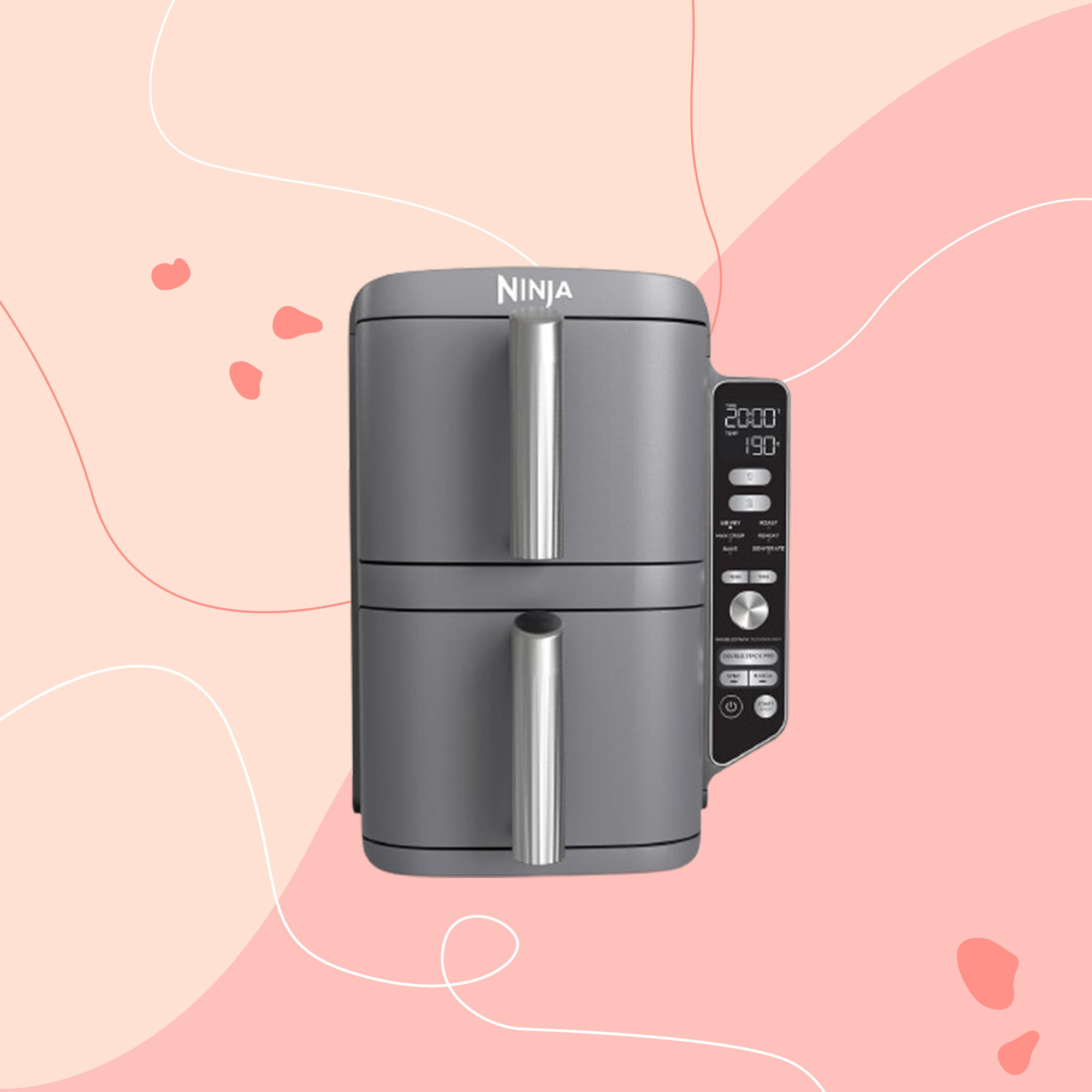
When it comes to air fryers, Ninja is reliably one of the best performing brands out there. So when we saw they had developed the game-changing Ninja Double Stack dual zone air fryer, we were itching to get our hands on it. So will this one follow in the footsteps of many of its peers and make it onto our list of the best air fryers?
This model flips the standard side-by-side design on its head and offers two cooking zones stacked on top of each other. And there is a point to this, the side-by-side models are wide and take up a chunk of worktop space that many kitchens simply don’t have available.
I must admit I’m a fan of Ninja appliances and own several. In fact the Ninja Combi that I recently reviewed is still on my worktop while I continue to perfect the settings for baking my sourdough bread. So, needless to say I went into this review assuming the Double Stack would be faultless. However, it didn’t quite meet my expectations…
Ninja Double Stack Air Fryer product specs
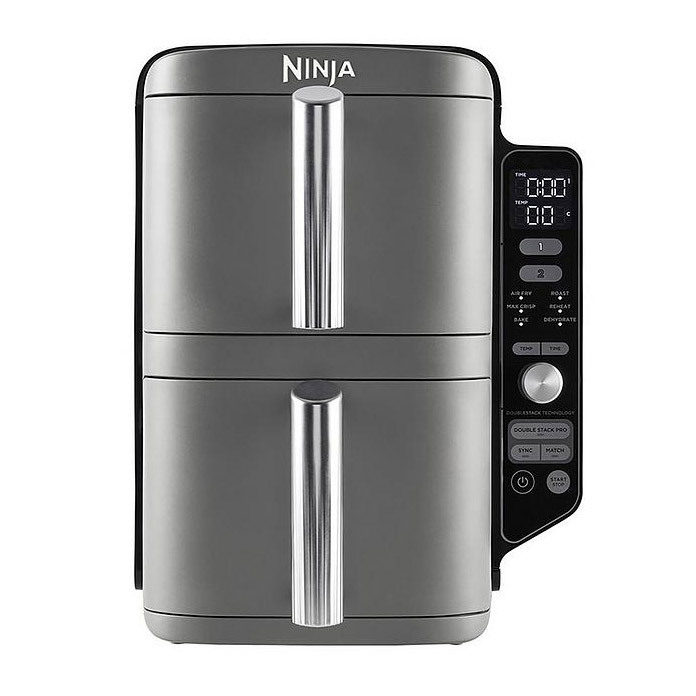
- Capacity: 9.5 litre
- Cooking modes: Air fry, max crisp, bake, roast, reheat, dehydrate
- Weight: 10.3kg
- Size: (H)38.5 x (W) 28cm x (D)47cm
Unboxing and first impressions
Ninja is a brand that has embraced recyclable cardboard packaging, so thankfully there’s no plastic or polystyrene to contend with when opening the box and unpacking this model.
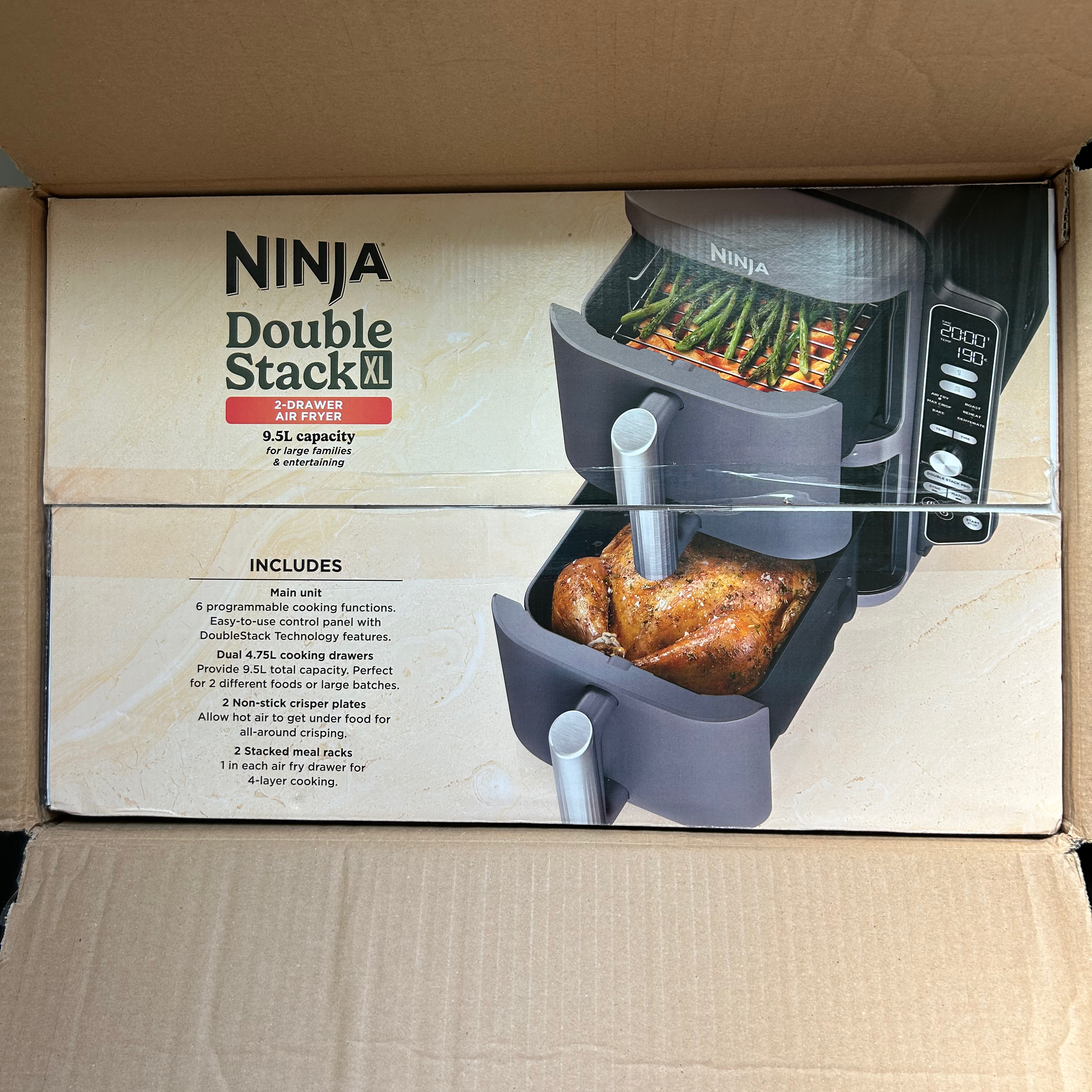
I was expecting it to feel very tall, but once on my worktop it didn’t feel quite as imposing as I anticipated. The advertised 28cm width includes the control panel that juts out on the right hand side. The depth meanwhile is listed at 47cm but this includes the handles that protrude from the front. So the actual footprint on the worktop is more like 23 x 39cm.
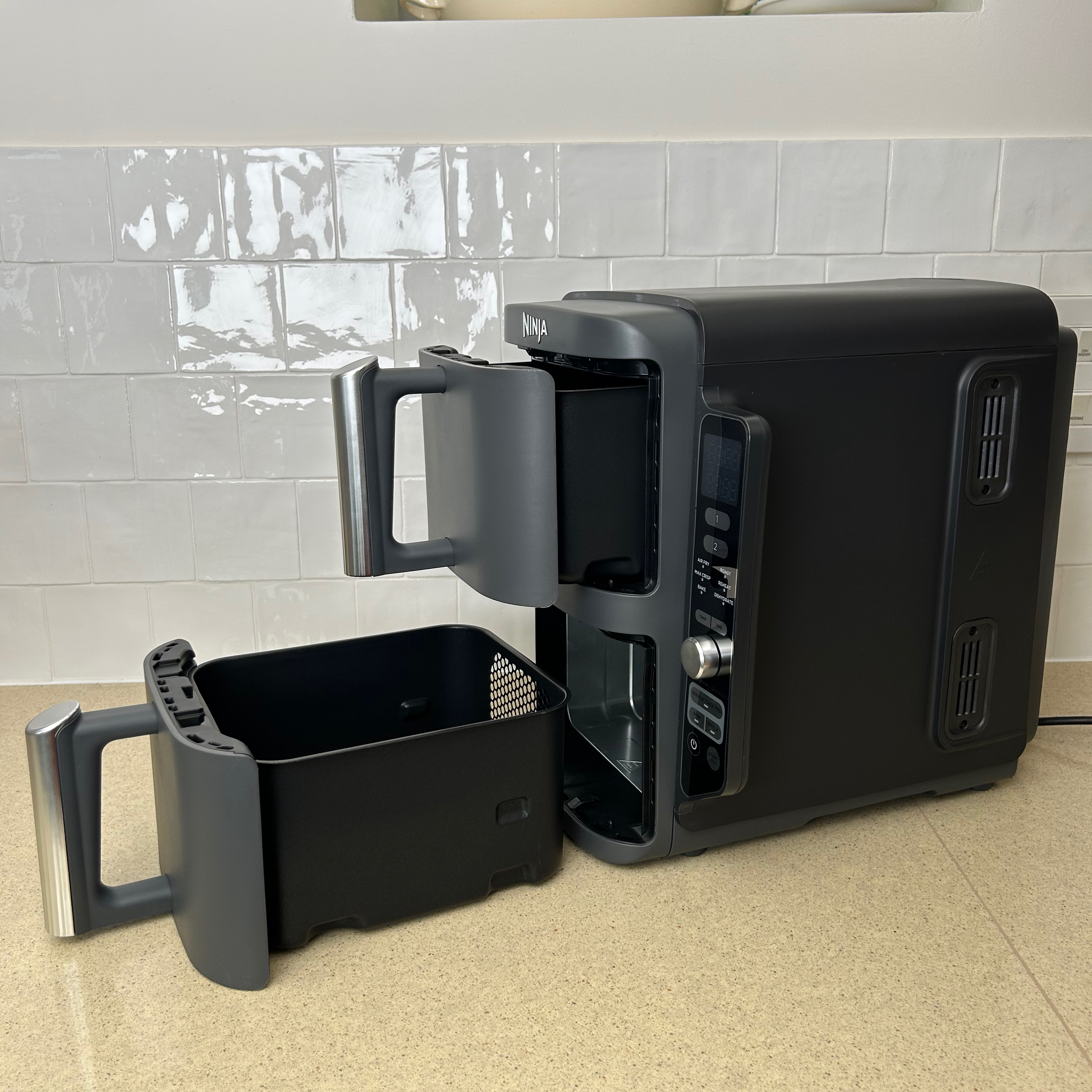
Make no mistake though, it’s still a chunky appliance, and given that the Ninja Foodi Dual Zone AF400UK, which is the same capacity but with side-by-side drawers, is listed as 41.5cm x 27cm, there’s not much difference in the overall footprint.
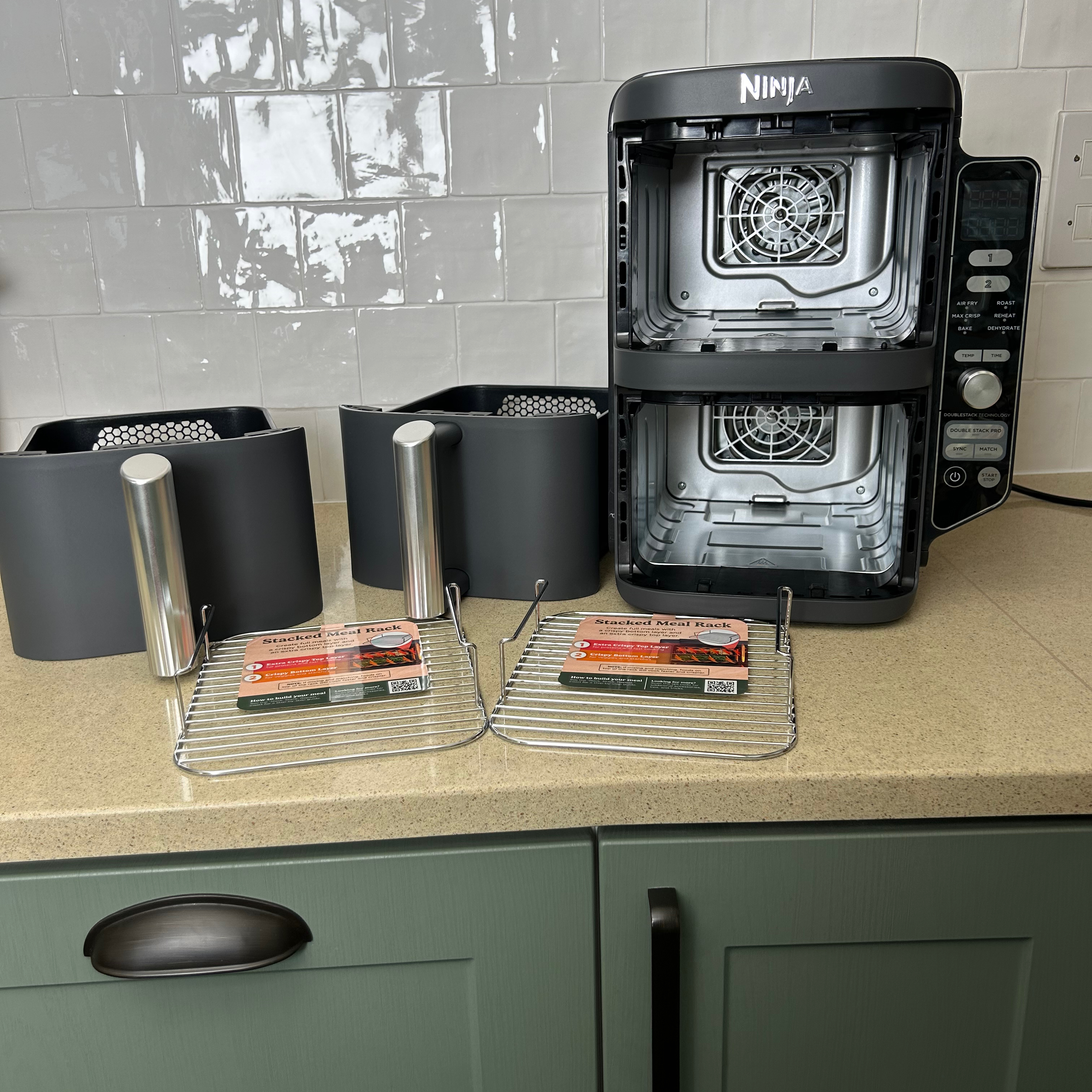
It seems that despite stacking the two drawers on top of each other and making the appliance taller, the only major difference in the footprint is that it’s been flipped so that it’s deep and tall, but not very wide. This means it can’t be pushed back very far on the worktop, but instead you benefit from the narrow width. I’m in two minds about whether this is better, I suppose it’ll depend on the space you have available in your kitchen.
Personally I don’t love the way the control panel sticks out at one side. But, in true Ninja style it is straightforward to use and offers everything you need. The dial allows you to scroll through the six cooking modes and then adjust the settings via the time and temperature buttons.
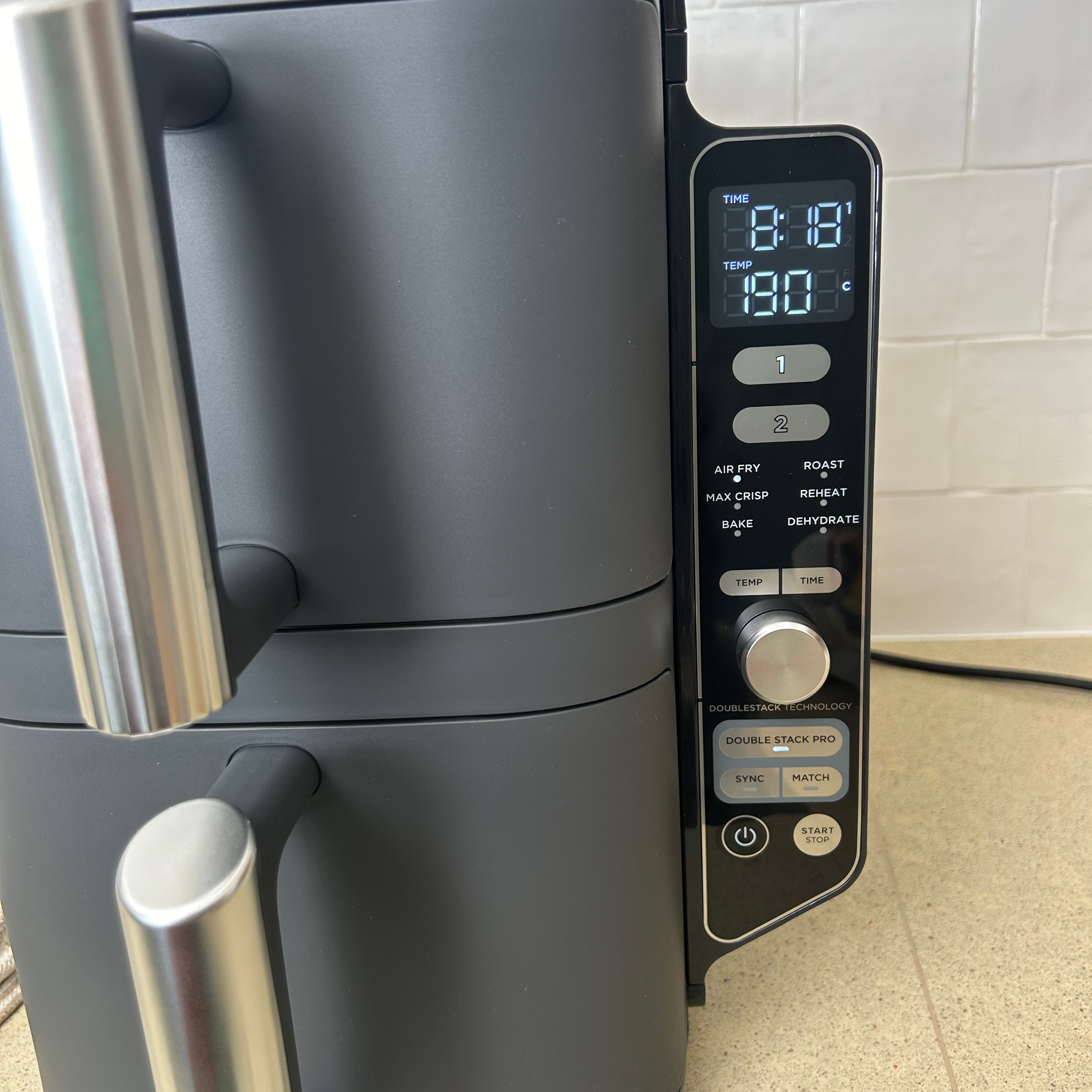
Each drawer can be set to cook independently and when doing so you can make use of the ‘sync’ button to ensure they finish cooking simultaneously. Or you can set one and use the ‘match’ button to copy the same settings to the second drawer.
The only other button you need to know about, and this is a new feature for Ninja air fryers, is the ‘double stack pro’ button. This should be pressed when you’re using the cooking racks to cook on two levels within one drawer.
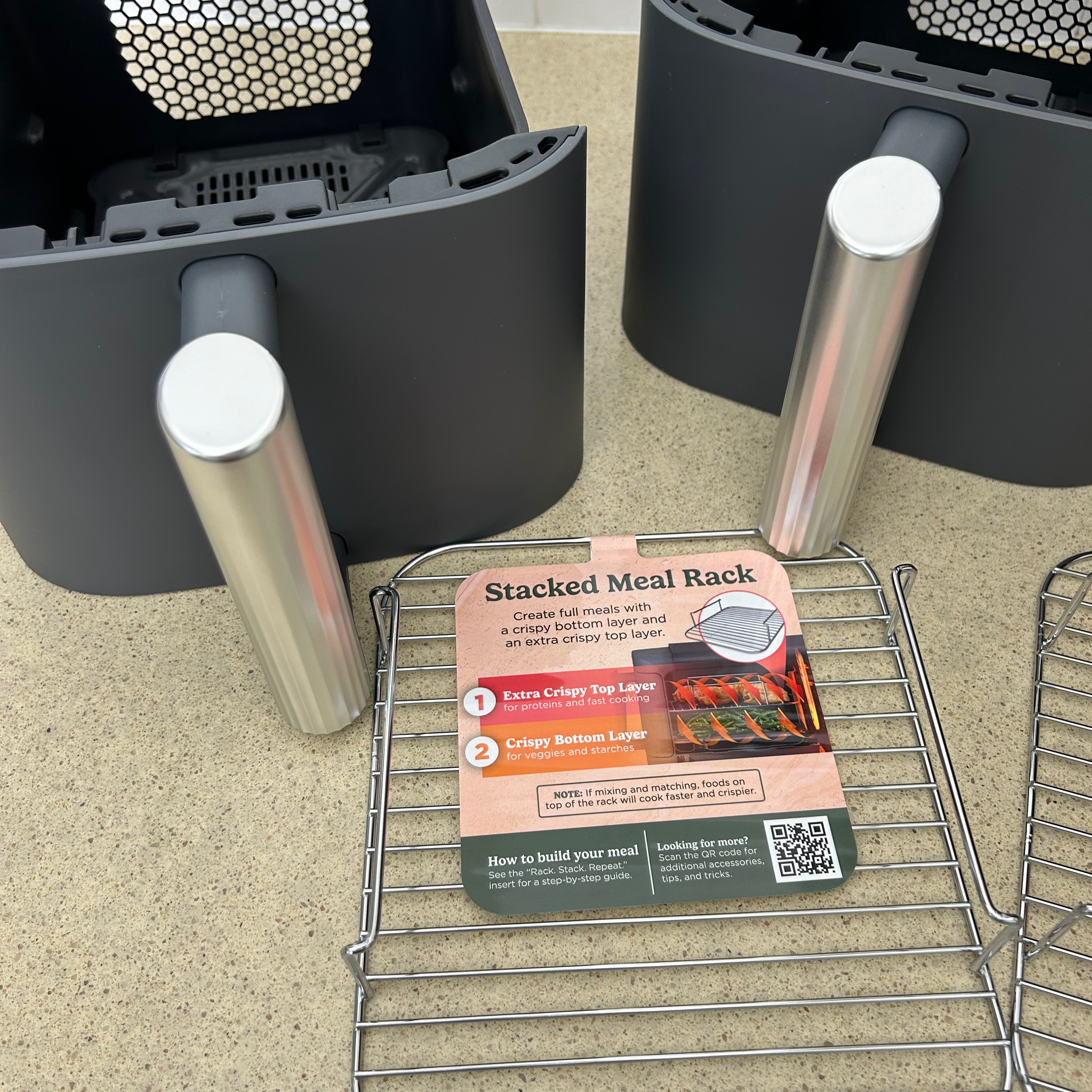
There are two racks supplied, one for each drawer and they slot in and sit about halfway down the drawer, dividing the space in two. And the supplied recipe book and quick start guide offers up plenty of inspiration on what foods to cook using the stacked cooking method. For example, putting proteins on top and vegetables underneath.
That’s not all though, the crisper trays that go in the base of the drawers, have an option to be inserted two ways. Meaning, if you want to raise your food up, the crisper tray can be inserted into a higher position. So all-in-all there are a lot more options in terms of the placement of foods as well as the amount that can be cooked as opposed to a standard air fryer.
The last noticeable difference with this air fryer is that instead of the heating elements and fans sitting above the drawers, they are at the back. This means the drawers themselves are perforated at the back to allow the hot air to circulate properly. Although I do wonder if this will cause any issues with grease or juices splattering out of the holes when shaking foods mid cook.
What is it like to use?
Air fry Double stack
Intrigued by the new double stack option, I decided for my first go with this air fryer, to try air frying sliced halloumi with strips of pepper below. I put it on at 190C for 15 minutes, being sure to press the ‘double stack pro’ button.
With five minutes left to go I opened it up and turned the halloumi, but it’s tricky to get to the peppers below without removing the scorching hot rack, so I left them and put the drawer back in to complete the last five minutes.
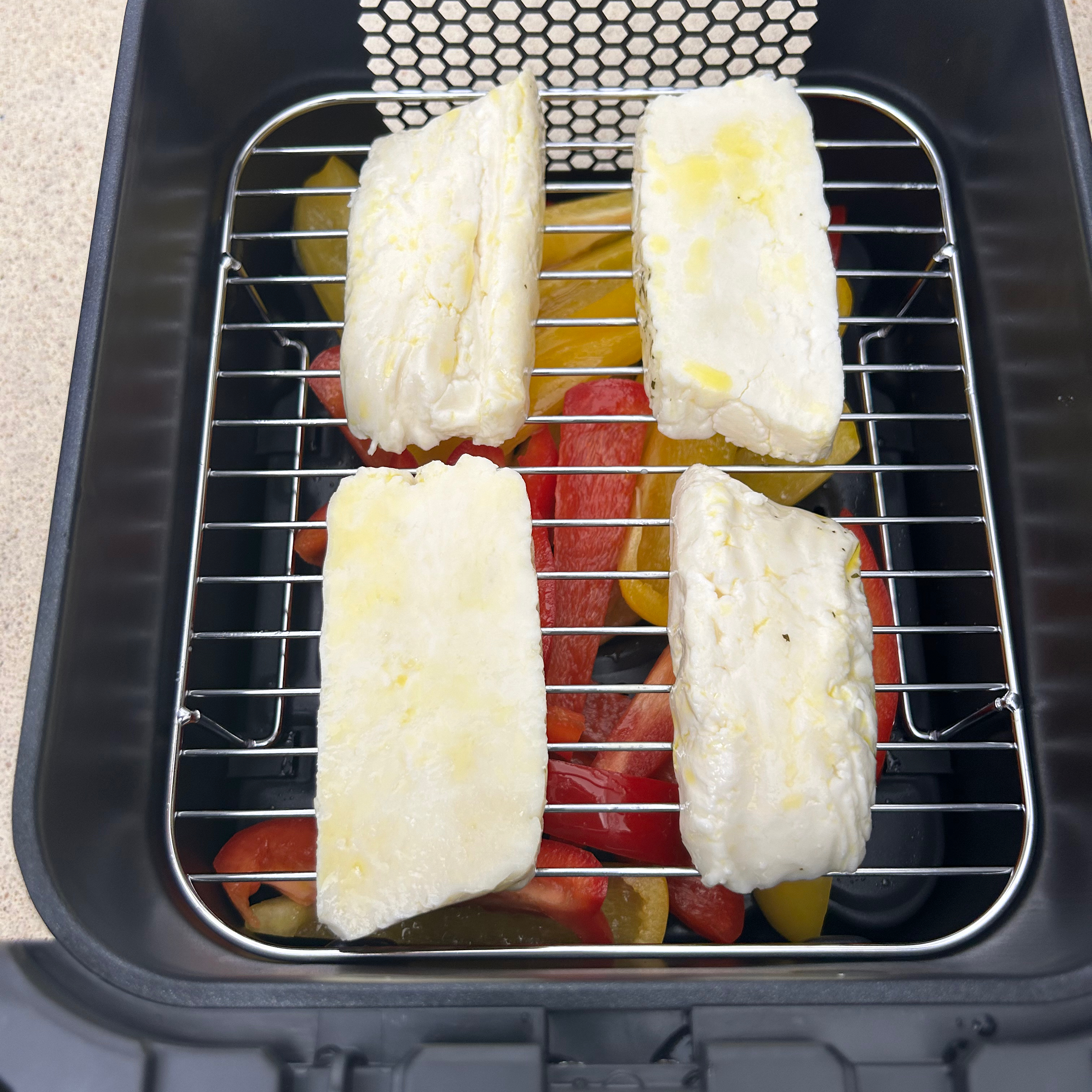
At the end, the halloumi was cooked, but the peppers needed a few minutes longer. Both though, were more browned at the front of the drawer than the back. So after carefully removing the hot rack, I popped the peppers back in, to air fry for a further five minutes.

I tried out the double stack option again to air fry cherry tomatoes, with two fishcakes above. This time I was intrigued to see whether the steam coming from the tomatoes would stop the fishcakes from crisping up.
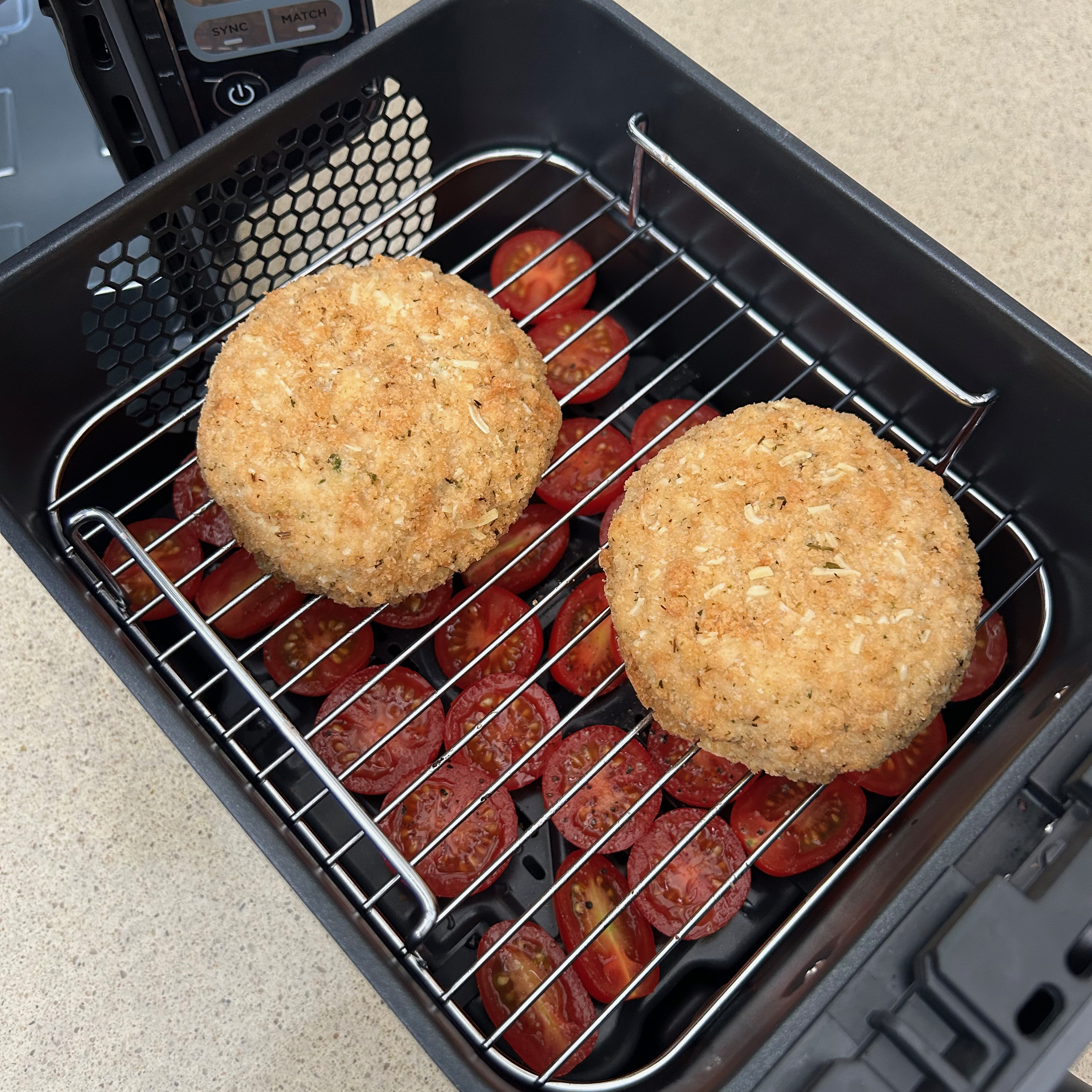
I checked the fishcakes a couple of times and they took 18 minutes to cook through. As with the double stacked halloumi and peppers, both the fish cake at the front as well as the tomatoes at the front of the drawer, were darker and more cooked than those towards the back.
The crumb of the fishcakes was crisp and crunchy on top, and though it wasn’t soggy underneath, it was definitely slightly less crunchy. All in all though, given that they were both cooked in the same drawer, it was a good result, I’d just swap the fishcakes over next time so they cook more evenly.
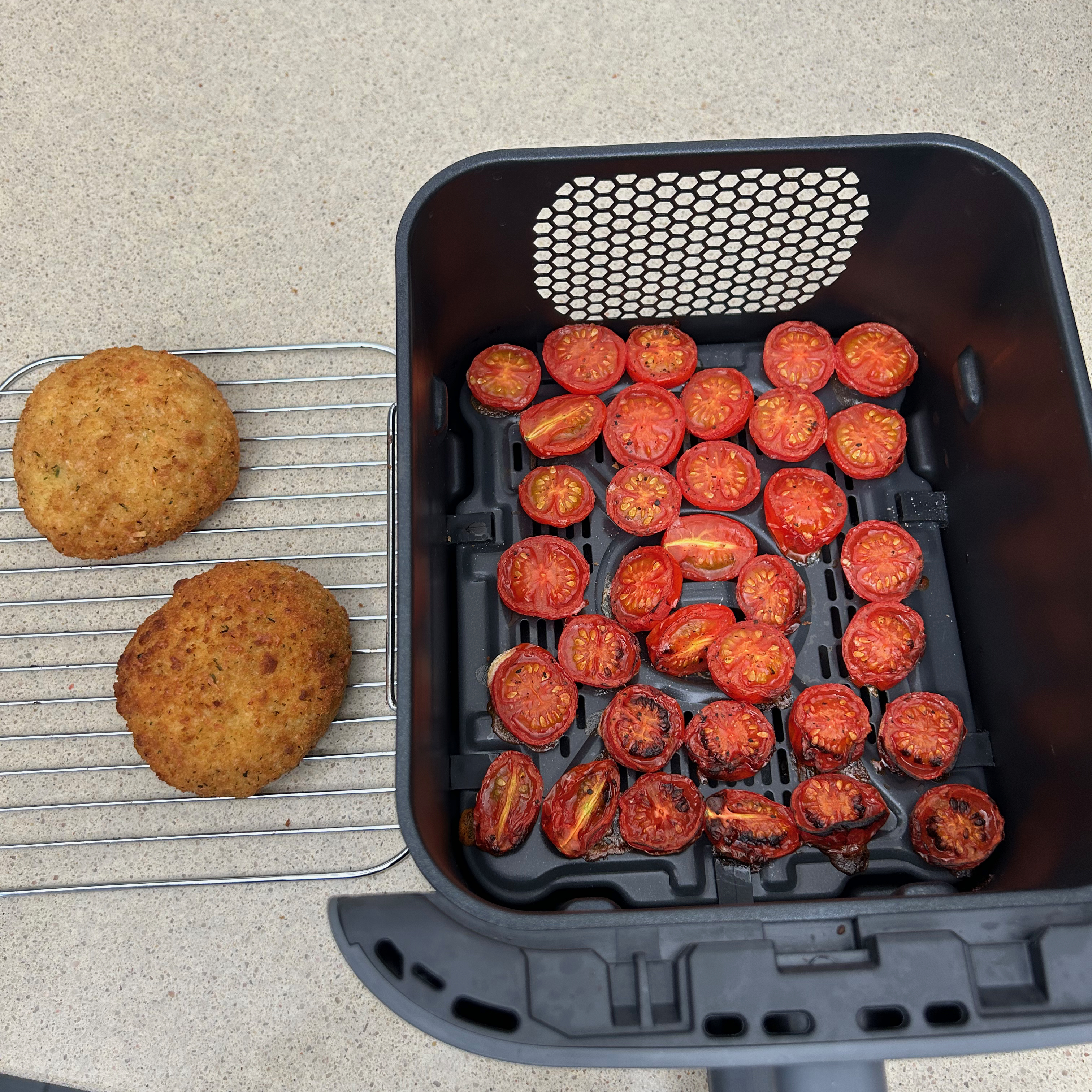
All Ninja appliances make a distinctive sound when starting and ending - if you know you know. It’s a sound I’ve become quite familiar and comfortable with. But on this particular appliance it’s particularly piercing and it started to grate on me from the get-go.
Bake
To try out the bake function I couldn’t resist following the recipe for peanut butter chocolate brownies that I saw in the included recipe book. I made up the brownie mixture, and as directed, divided it between the two drawers. I like that they get baked directly in the drawers, so I didn’t have to hunt around for a tin that would fit inside.
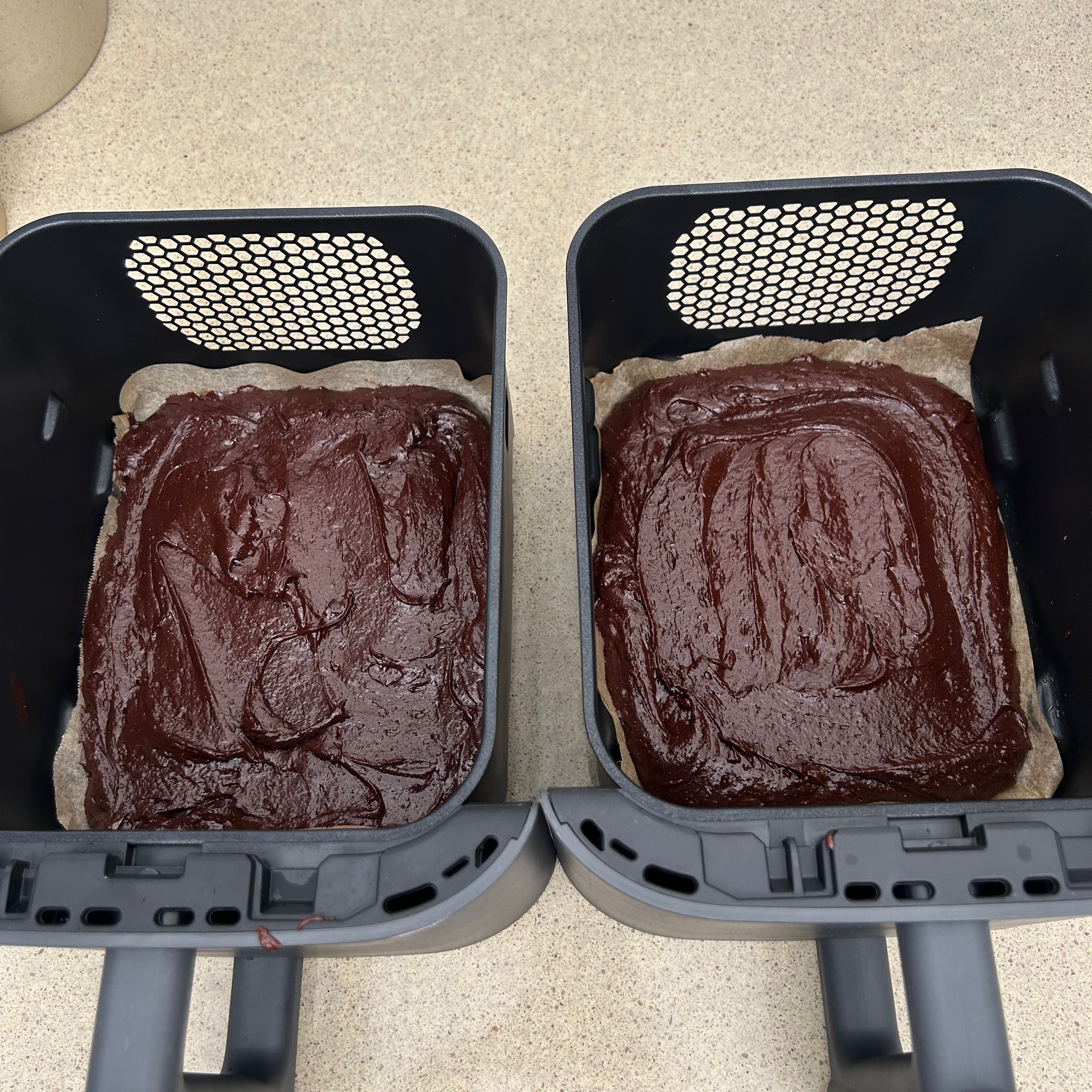
When setting up I used the ‘match’ button to ensure that both drawers were cooking on exactly the same settings. The recipe says to bake it for 33 minutes at 150C, which felt like a long time, however I resisted the temptation to check on it until it had cooked for the full recommended time.

And when it beeped at the end of cooking I was pleased to see that both brownies were evenly baked and looked a good, even colour. The texture was good too, dense and rich, though next time I’d reduce the cook time by five minutes to make them even fudgier.
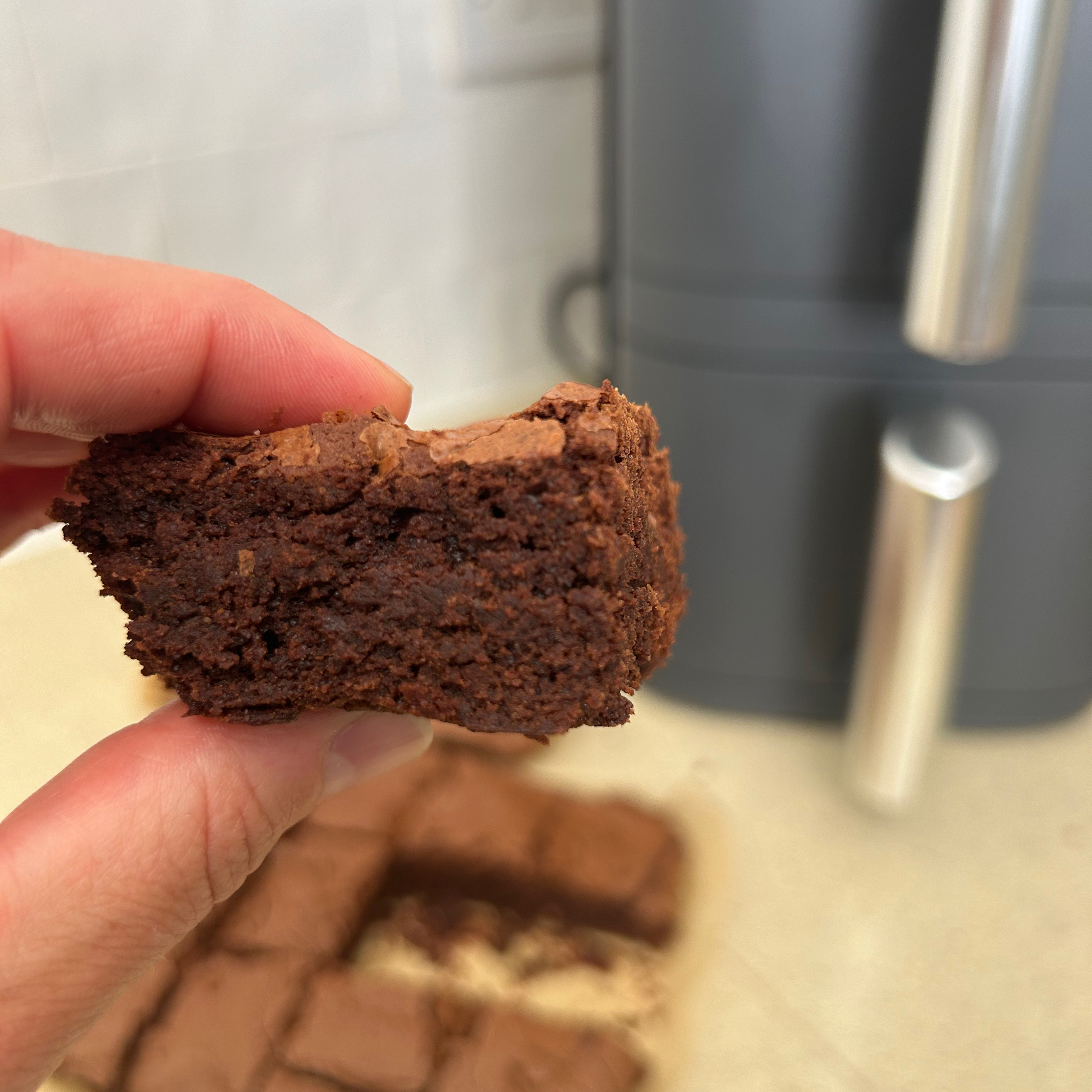
Max Crisp
I cooked frozen breaded fish fillets on the max crisp setting, since it’s specifically designed for frozen foods. They took 16 minutes, which was longer than my usual air fryer. Nevertheless, the breadcrumb coating was super crunchy, yet the fish inside still remained soft, tender, and succulent.

Air fry
To make a cheese toastie, I placed it on the rack in the hope that this would mean both sides would crisp up without the need to turn it - though sadly this tactic didn’t work. I air fried it at 190C and after nine minutes I had to turn it over and cook for a further two minutes to brown the other side.
It was a delicious toastie nonetheless, crisp and crunchy on the outside, with perfectly melted cheese in the middle.
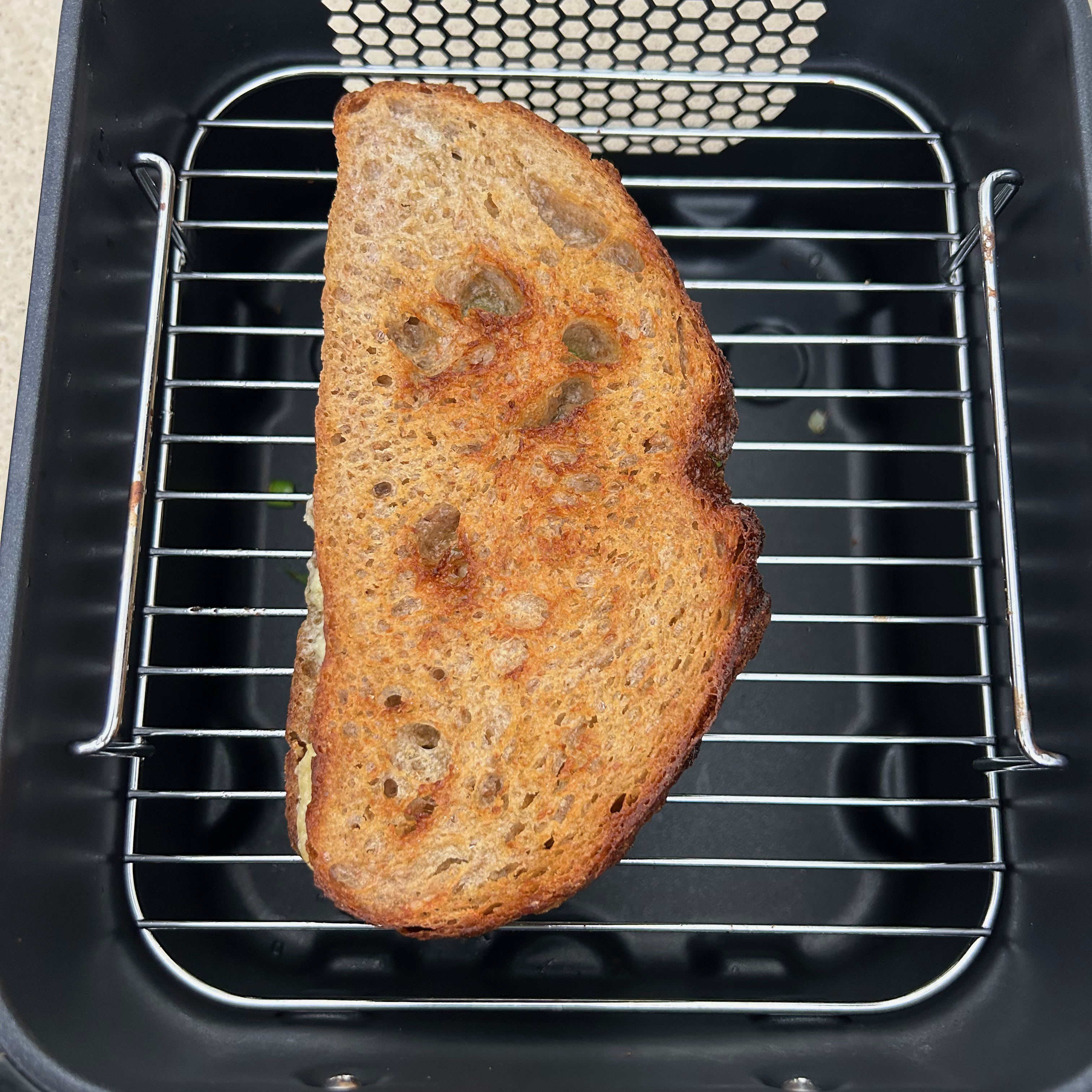
Roast and air fry sync
Lastly, I made home made air fried chips while simultaneously roasting chicken thighs in the other drawer. I set the thighs to roast at 200C for 20 minutes and the chips to air fry at 200C for 25 minutes, then pressed the sync button so they’d both be ready at the same time.
When I opened up the chips drawer to give them a shake, it automatically paused both timers, so they didn't become out of sync. However, the perforated back section of the drawer means if you shake too vigorously, oil can splatter out of the back, which is a tad annoying.
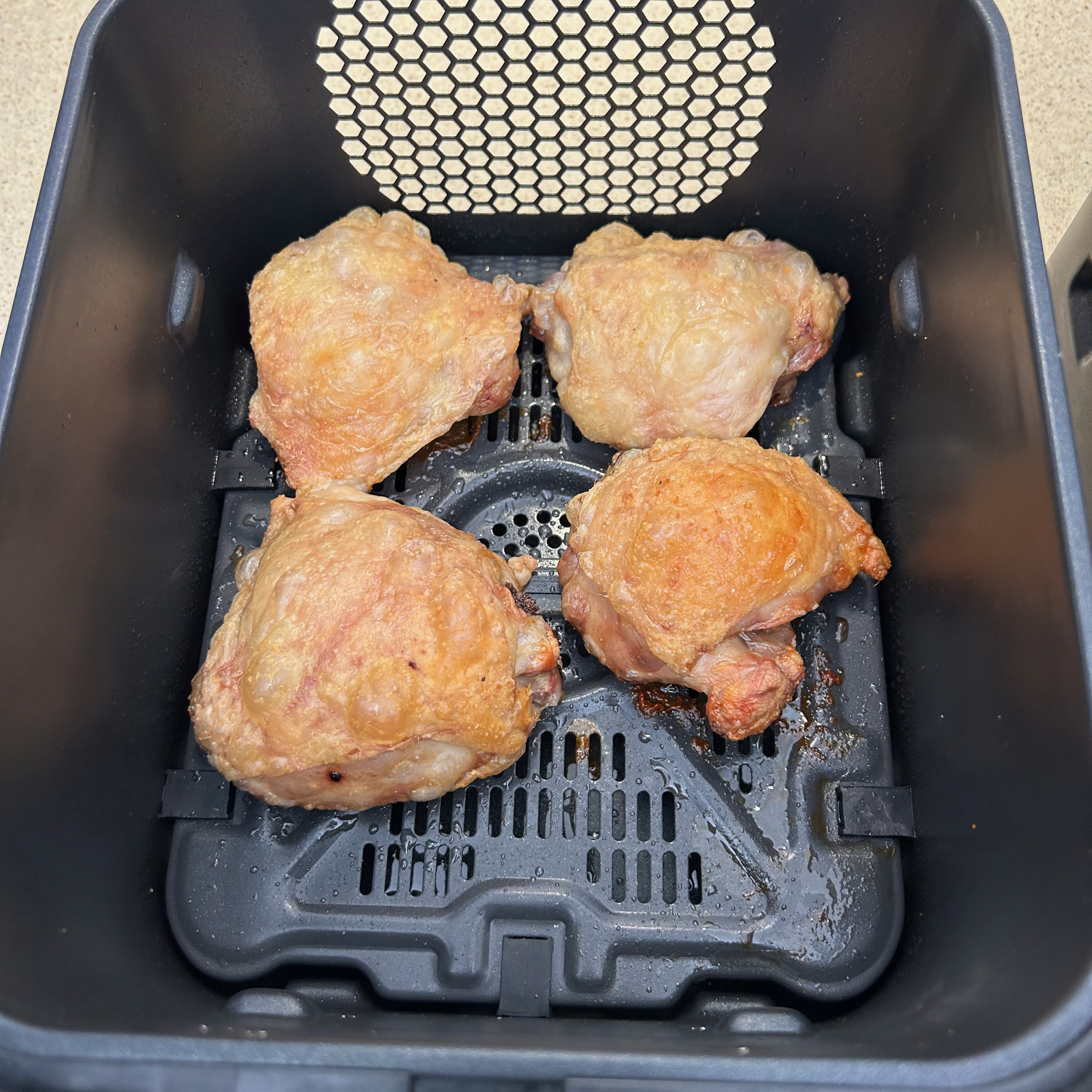
I ended up cooking both the chicken and the chips for an extra five minutes as neither was as well browned as I wanted when the first timer went off.
I was disappointed that even in roast mode, it cooked unevenly, with the two thighs at the front of the drawer browning more than those at the back. But, that being said, they all had a crisp skin and tender succulent meat.

Given that they had been air fried for 30 minutes, which is a lengthy amount of time, the chips were still on the soft side, and nowhere near as crisp and evenly browned as I’ve come to expect from a Ninja air fryer.
During this cook I noticed the sides of the air fryer got quite hot, particularly the left, which reached 67C. So it’s worth taking care not to place anything too close to it.
Cleaning the Ninja Double Stack
All the removable drawers, racks, and crisper trays can go in the dishwasher, though Ninja advises washing by hand for longevity. And hand washing wasn’t too tricky thanks to the non-stick coatings.
However, what I missed was the option to fill up the drawers and leave them to soak. The perforations at the back meant that unless I filled my whole sink, I could only fill the drawers with a couple of centimetres of water in the bottom to soak.
How does it compare to similar Ninja air fryers?
If you want two cooking zones, but you’d rather have a model that can be pushed to the back of your worktop, I’d recommend considering the Ninja Foodi FlexDrawer. It’s the same price, but offers a slightly bigger overall capacity. It might lack the stacked meal racks, but instead, you get a flexible cooking zone that can be used as one big drawer or two separate, smaller ones.
Given that the Ninja Double Stack is one of the highest priced air fryers from Ninja, you could save a good chunk of cash by opting for the single drawer, but excellent, Ninja Air Fryer MAX PRO. It’s ideal for compact spaces, and while you will be sacrificing some cooking space as well as the dual drawer option, it really is one of the best air fryers for smaller kitchens.
Should you buy the Ninja Double Stack Air Fryer?
The Ninja Double Stack is an innovative way of changing the size and shape of a dual zone air fryer so that it demands space differently on your worktop, but don’t be fooled into thinking it’s compact. It is still very deep and spans virtually the whole of my worktop front to back.
It is, on the whole, an okay air fryer. But, the point is that Ninja is known for making excellent air fryers that are very hard to fault, and this one just isn’t up to that standard. Particularly in regard to the uneven browning that I saw and also the cook times, that were often longer than usual for a Ninja air fryer.
When you take into consideration the high price, I personally think you’d be better off investing in any one of Ninja’s other air fryers - they all offer top-notch performance. Go through the specs, have a measure up and you might be surprised that the overall footprint isn’t all that different.
About this review and the reviewer
After completing a Home Economics degree, Helen went on to work for the Good Housekeeping Institute and has been reviewing home appliances ever since. She lives in a small village in Buckinghamshire in the UK, where she reviews all sorts of home and garden appliances using her wealth of experience.
Helen used the Ninja Double Stack Air Fryer in her kitchen at home for a week after being kidly provided with the sample by Lakeland, where you can buy it for £269.99. She tried out all the functions and cooked several meals for herself and her husband, so she could bring you her honest thoughts on whether it’s worth your money.







